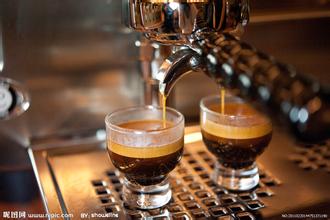Introduction to the unique and strong flavor and taste of Costa Rican Fire Phoenix Manor Coffee
(1) Partido de Liberaci ó n Nacional: the ruling party. It was founded in April 1952 and came to power nine times. At present, there are about 630000 party members, belonging to political parties of a social democratic nature. Internally, we advocate improving democracy, increasing investment in public utilities, improving the democratic system, implementing the policy of opening up trade to the outside world, increasing efforts to attract foreign investment, carrying out pluralistic diplomacy, and supporting regional integration. In February 2010, the party's candidate Chinchilla was elected president, achieving his ninth term in office. Party Chairman Bernal Jimenez (Bernal Jim é nez) and General Secretary Antonio Calder ó n Castro.
(2) Partido Acci ó n Ciudadana: Colombia's second largest political party, the opposition party. It was founded in December 2000 by Ott ó n Solis Fallas, supported mostly by the urban middle class. After the establishment of the party, its strength grew rapidly, which changed the situation that the party of the democratic liberation party and the Christian social organization party took turns in power for a long time. The party actively promotes citizens' participation in national politics and construction, advocates a revolutionary political system, eradicates corruption and abuse of power for personal gain, advocates the development of national economy, and opposes the economic policy of neo-liberalism and privatization of state-owned enterprises. The current party chairman, Elizabeth K. Fonseka Corrales (female, Elizabeth Fonseca Corrales), and General Secretary Margarita Bolanos Arkin (female, Margarita Bola ñ os Arquin).
(3) Freedom Movement Party (Movimiento Libertario): Colombia's third largest party, opposition party. Formed in December 1994. The party, which originated from the liberal Christian Social Solidarity Party, advocates restrictions on the functions and powers of the government, full protection of individual freedoms and support for economic and trade liberalization. Party chairman Otto Guevaragus (Otto Guevara Guth), general secretary Danilo Kubero (Danilo Cubero).
(4) Christian Social Solidarity Party (Partido Unidad Social Cristiana): in December 1983, it was composed of the Democratic Baath Party, the National Republican Party, the Christian Democratic Party and the people's League Party. Since its establishment, the party has developed rapidly and has formed a situation in which Costa Rican politics and the Democratic Party of the people's Liberation Party take turns in power. After 2000, the popularity of the party fell because several dignitaries were mired in corruption scandals. Party Chairman Gerardo Vargas Rojas (Gerardo Vargas Rojas), General Secretary William Alvarado Bogantes (William Alvarado Bogantes)
Coffee is an important economic source of Costa Rica. It was introduced in 1808 and has been cultivated for 200 years. Costa Rica has 1x3 population input.
In the coffee-related industry, Colombians say that coffee has changed the country and enjoyed a rich environment, and coffee has indeed made an outstanding contribution. Although the land area of Colombia ranks third from the bottom of Central America, its economic environment is better than that of half of the countries. due to the affluence of the people, social stability, and spare capacity to care about environmental issues, there are more than 30 national parks in Colombia.
Coffee was introduced into Costa Rica from Cuba in 1729. Today, its coffee industry is one of the well-organized industries in the world, with a yield of 1700 kg per hectare. Costa Rica has only 3.5 million people but 400m coffee trees, and coffee exports account for 25 per cent of the country's total exports. Costa Rica's volcanic soil is very fertile and well drained, especially in the central plateau CentralPlateau, where the soil consists of successive layers of ash and dust. Costa Rica was therefore the first country in Central America to grow coffee and bananas for commercial value. Coffee and bananas are the country's main exports.
Scientific research planting editor
The research center, located about 30 kilometers northeast of San Jose, the capital of Costa Rica, belongs to the Costa Rican Coffee Association.
Brazilian coffee fruit
Brazilian coffee fruit
Coffee planting, breeding, quality inspection research institutions, in addition, it also has 10 hectares of experimental plots, planting a number of excellent varieties. Coffee is Costa Rica's main agricultural product, with an annual output of more than 2 million bags (60 kilograms) and foreign exchange earnings of 250 million US dollars, second only to pineapples and bananas.
All the coffee trees planted in Costa Rica are Arabica coffee trees. through improvement, the quality of coffee beans is better and more stable. in order to facilitate picking, coffee trees are kept at a height of about 2 meters through continuous pruning. The coffee that people eat is the taste of the seeds in the fruit that are brewed in water. After picking raw coffee beans, you must remove the peel, pulp, seed film and sun exposure before the seeds (that is, coffee beans) can be roasted. Part of the process can be replaced by machines, and the speed of coffee production increases a lot. However, there is no machine to do coffee picking, so you must use manual labor.
Feature editor
Costa Rican coffee has full particles, ideal acidity and unique strong flavor. Costa Rica's coffee industry, originally controlled by the Costa Rican Coffee Industry Company (ICAFE), has been taken over by the official Coffee Committee (Oficinale Cafe). Among the exported coffee, those products that are considered to be of substandard quality are colored with blue vegetable dyes and then transferred back to China for sale. Coffee consumed domestically (dyed blue or undyed) accounts for about 10% of total production, and local per capita coffee consumption is twice that of Italy or the United States.
This coffee producing place, coffee of all grades and types accounts for 1/3 of the global consumption and occupies a share in the global coffee market.
Place of Origin
Place of Origin
Although the natural disasters faced by Costa Rica are several times higher than those in other regions, its arable area is enough to make up for it.

Important Notice :
前街咖啡 FrontStreet Coffee has moved to new addredd:
FrontStreet Coffee Address: 315,Donghua East Road,GuangZhou
Tel:020 38364473
- Prev

Flavor and taste characteristics of Colombian coffee producing area introduction of boutique coffee beans in Hope Manor
After the news of Napoleon I's invasion of Spain in 1808 spread to Colombia, the people of that place immediately launched an independence movement. On July 20, 1810, a large-scale uprising against Spanish colonial rule broke out in Bogota and the Governor of New Granada was arrested. In November 1811, representatives from all over the world organized Congress in Bogota and established the New Granada Joint Provincial Government, which was announced on November 11.
- Next

The sour taste of citrus fruits the flavor and taste characteristics of Bolivian snow vein manor coffee
In 1932, the Chaco War broke out between Bolivia and Paraguay for oil resources in the North Chaco region. Bolivia was defeated and lost a large area of territory. The people's armed uprising broke out in April 1952, and Paisdensolo, leader of the nationalist revolutionary movement, became president. Since then, there have been frequent military coups and long-term political instability. Modern assets with South American characteristics were restored in October 1983
Related
- Does Rose Summer choose Blue, Green or Red? Detailed explanation of Rose Summer Coffee plots and Classification in Panamanian Jade Manor
- What is the difference between the origin, producing area, processing plant, cooperative and manor of coffee beans?
- How fine does the espresso powder fit? how to grind the espresso?
- Sca coffee roasting degree color card coffee roasting degree 8 roasting color values what do you mean?
- The practice of lattes: how to make lattes at home
- Introduction to Indonesian Fine Coffee beans-- Java Coffee producing area of Indonesian Arabica Coffee
- How much will the flavor of light and medium roasted rose summer be expressed? What baking level is rose summer suitable for?
- Introduction to the characteristics of washing, sun-drying or wet-planing coffee commonly used in Mantenin, Indonesia
- Price characteristics of Arabica Coffee Bean Starbucks introduction to Manning Coffee Bean Taste producing area Variety Manor
- What is the authentic Yega flavor? What are the flavor characteristics of the really excellent Yejasuffi coffee beans?

